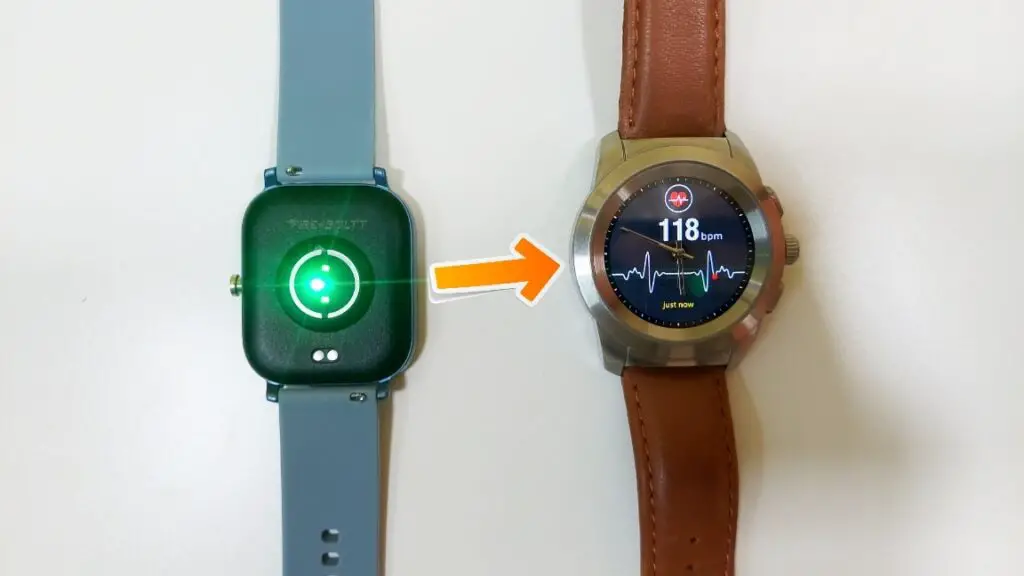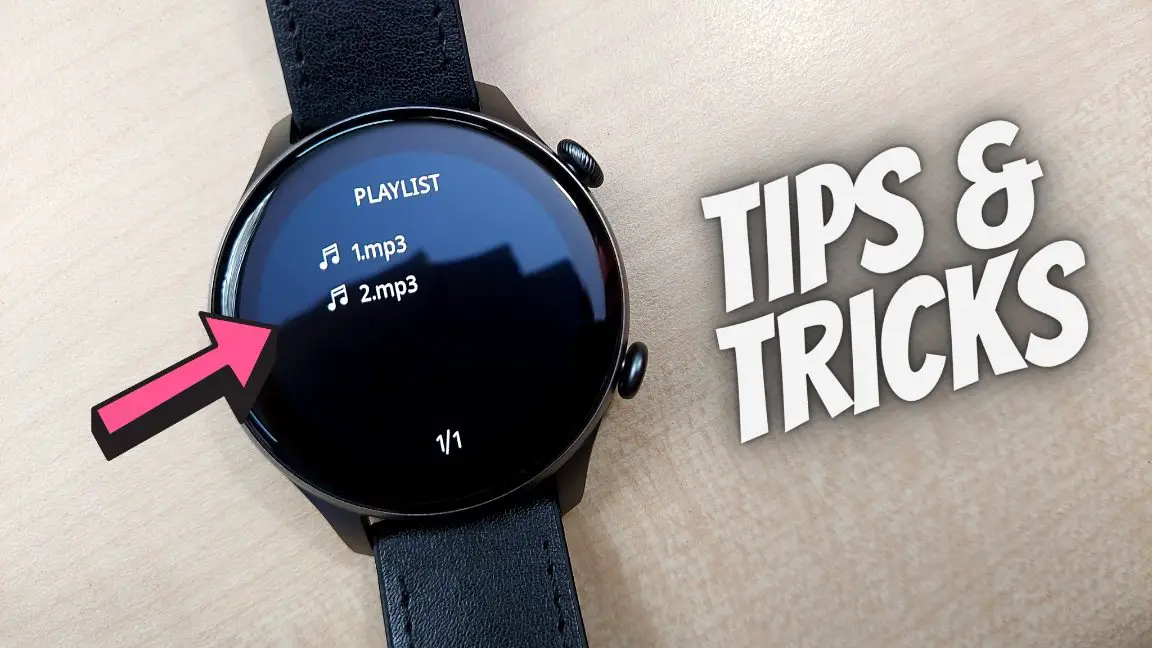All the smartwatches in the market run an operating system, be it Google’s Wear OS, Apple’s Watch OS, RTOS, or others. But many people don’t know which OS to prefer when buying a smartwatch or what software the smartwatch they already have is running on. Therefore, this article will discuss the different types of smartwatch OS and their pros & cons.
Related | Smartwatch Display Types Explained- Pros & Cons, Which Is Best?
List of Smartwatch OS (Operating Systems)
You’ll find different types of operating systems on smartwatches in the market. It would vary across manufacturers, price segments, and target audiences. Below are all major smartwatch OS like WearOS, WatchOS, Fitbit OS, Garmin OS, and Zepp OS with their key features, pros, and cons.
1. Google’s Wear OS (Android Wear)

Wear OS is a popular smartwatch operating system created and maintained by Google. It is formerly known as Android Wear and is more or less Android crafted for fully-functional smartwatches.
The Wear OS comes with a power of a smartphone on a watch. It provides access to all the Google services like Gmail, Google Play Store, Google Assistant, Google Maps, etc. It also supports connectivity features like WiFi, Bluetooth, NFC, and LTE, provided apt hardware is present.
You can download third-party apps from the Play Store available for smartwatches and install supported APKs. Furthermore, it supports Google Fit direct sync that uses the smartwatch’s sensors to record real-time activity data.

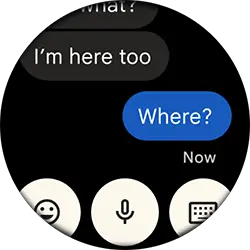

Other features of Wear OS include playing music, and videos, running apps like Instagram, Facebook, and WhatsApp, using gesture controls, voice recognition, and calling.
There is a lot more to talk about the Wear OS, but in short, it is the mainland of Android smartwatches, just like Android smartphones.
Pros of Google Wear OS:
- Access to Google Services
- Supports Tons of Apps
- Bluetooth, WiFi, and LTE Connectivity
- Easily Customizable
- Seamless Portability
- Navigation Via Google Maps
Cons of Google Wear OS:
- Smaller Screen May Limit the Experience
- Less Third-party Apps Supported
- Can Be Slow on Low-End Watches
- Consumes More Battery Life
- S
You will generally find Wear OS on mid to premium smartwatches like Samsung Galaxy Watch 4, Fossil Gen 6, TicWatch Pro 3, etc. You can explore WearOS smartwatches here.
2. Apple’s Watch OS

Watch OS is Apple’s operating system created and available only on the Apple Watch. This is an advanced operating system that has access to most Apple services. It is designed to provide an iPhone-like experience on a smaller screen.
The Watch OS shares many similar features to iOS for iPhone and iPad. Siri comes built-in into the OS that you can use to perform different actions with your voice. You can keep cards and ID in your wallet, use Walkie Talkie to voice chat with friends, set timers, and track your health.
It has a capable navigation system with Apple Maps support and supports compatible third-party apps. Depending upon the watch model, you get all major connectivity features, including Bluetooth, WiFi, and Cellular.

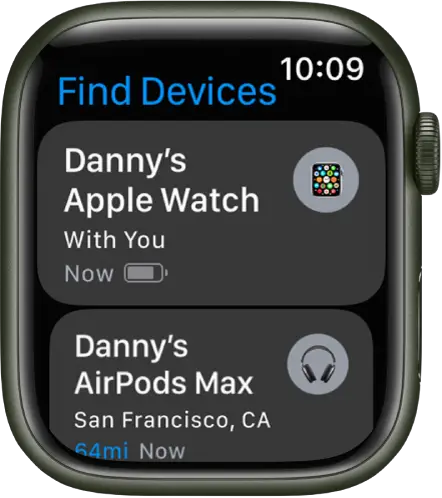
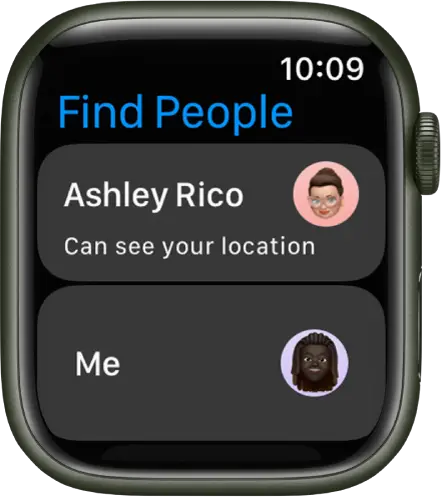
The Apple Watches with an always-on retina display allows users to access any app even when the screen is off. The developers can create apps for Watch OS more feasibly with the support of HealthKit, Assistive Touch, and Canvas.
Pros of Apple Watch OS:
- Attractive UI
- Smooth & Polished Experience
- Support of Apple Services
- Navigation with Apple Maps
- Bluetooth, WiFi, and Cellular Connectivity
Cons of Apple Watch OS:
- Available Only for Apple Watch
- Works Only with iPhones (Android not compatible)
- Less Portability
- Average Battery Life
You can find the Watch OS on all Apple Watch models, ranging from the Series-1 to Apple Watch SE and Apple Watch Series-7.
3. FreeRTOS

The FreeRTOS is a type of Real-Time Operating System that can be designed differently for different smartwatches. This lightweight operating system runs on a single chip with very limited memory. Due to this, it consumes less battery while providing a smooth experience.
Many smartwatch brands around the globe use a FreeRTOS as it helps with cost-cutting and gives more flexibility to the brand. Brands can implement apps with different names and icons in the watch via software updates anytime.
This operating system generally does not allow users to download any third-party apps on the smartwatch. It’s also hard to make external tweaks. All-inclusive, the complete control of the watch UI and features is in the brands’ hands.

Smartwatches with FreeRTOS are generally fitness-oriented. Although, you may see features like Alexa, offline voice assistant, apps like Calculator, and more on some models. Overall, RTOS is built to provide an intuitive smartwatch experience while keeping the price in check.
Pros of FreeRTOS:
- Battery Efficient
- Smoother UI Experience
- Customizable by Brands
- Easily Accessible
- Comes at an Affordable Price
Cons of FreeRTOS:
- Brands have Full Control
- Does Not Support Third-party Apps
- No Portability
- Less Attractive
The FreeRTOS is different in all the brands. You will find different UI in smartwatches from brands like OnePlus, Xiaomi, Realme, etc. For example, the Samsung Galaxy Fit, Amazfit GTS, Redmi Watch, etc.
4. Tizen OS
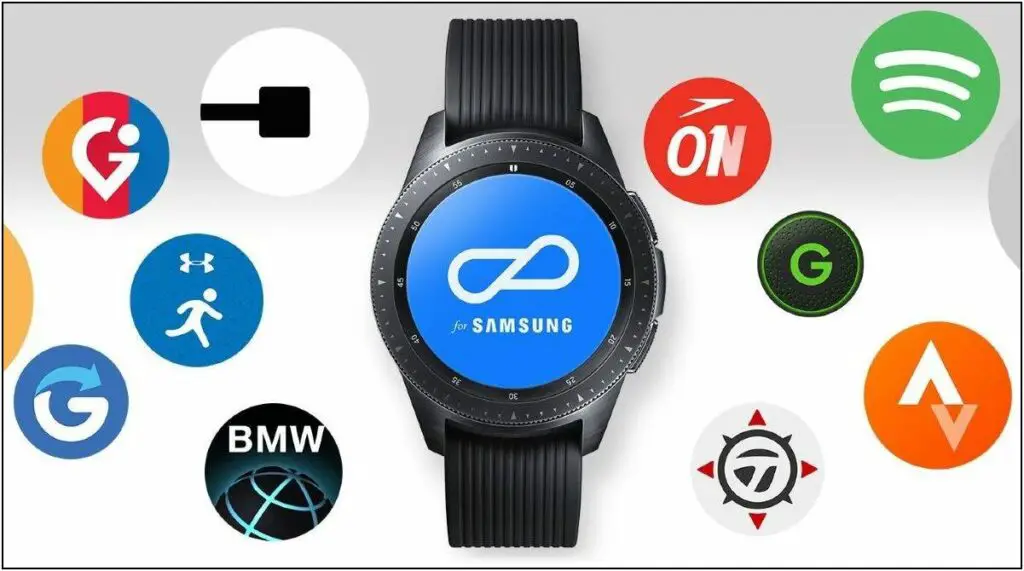
Tizen OS is Samsung’s in-house operating system available on previously released Samsung watches. This is a fully-functional OS like the Wear OS but has its own set of features.
It has its own Tizen App Store that allows users to download third-party apps on the watch. It also supports Samsung’s Galaxy Store to download apps on the watch.
Rest, it features NFC payments, Bixby assistant, cellular connectivity, built-in health tracking, and more. Although, it relies on Samsung Health to monitor your health and activity data instead of Google Fit.
It is a complete feature-packed alternative to the Wear OS that only comes in Samsung smartwatches. It also consumes more battery life and can be laggy at times.
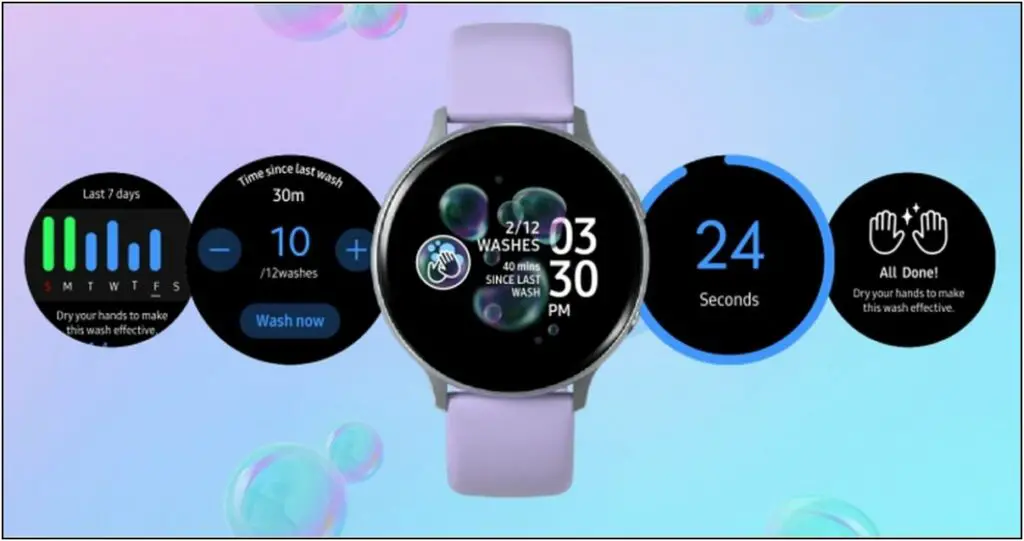
It’s important to note that Tizen will no longer be seen on new smartwatches.
Pros of Tizen OS:
- Productivity-oriented
- Supports Third-party Apps
- NFC Support
- Bluetooth, WiFi, and Cellular Connectivity
- Dedicated Samsung Health System
Cons of Tizen OS:
- Less Appealing
- Consumes More Battery Life
- Google Services Not Supported
- Tizen OS is Officially Dead
The Tizen OS can be found on older Samsung Gear and Galaxy series of smartwatches. The current Galaxy Watch 4 marks the brand’s shift to Google’s unified Wear OS and the end of Tizen OS for Samsung watches.
5. Fitbit OS
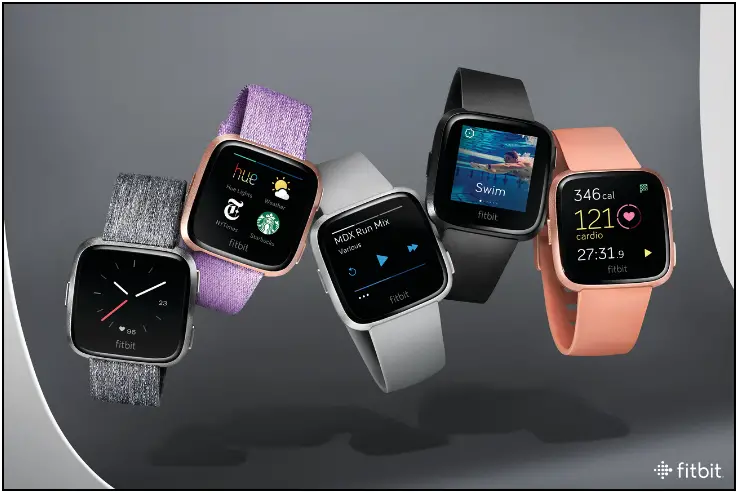
The Fitbit OS is the company’s proprietary OS that only comes in Fitbit smartwatches. This is based on RTOS, customized by Fitbit for its smartwatches.
Fitbit OS allows you to track your health data, listen to music, and get health-related alerts on your wrist. It also supports NFC payments with Fitbit Pay. Other useful features are 24/7 heart rate, active-zone minutes which tell you the fat and calories burnt during your high-intensity workout, sleep score, and guided breathing.
It also supports Bluetooth calling, Google Assistant and Amazon Alexa, and third-party apps via the Fitbit App Gallery. These features can vary across the models.

All these features make it a very useful smartwatch OS specially made for Fitbit watches. Given the lightweight profile, it is also battery efficient and runs smoother than other heavy operating systems.
Pros of Fitbit OS:
- Supports Third-party Apps
- Bluetooth Calling and Quick Replies
- Google Assistant and Amazon Alexa Support
- NFC Payments
- Battery Efficient
- Better Health Algorithm
Cons of Fitbit OS:
- Limited to Fitbit Watches
- Cellular Calling Not Supported
- Google Services Not Available
The Fitbit OS can be found on Fitbit smartwatches like Fitbit Versa, Fitbit Sense, etc.
6. Garmin Watch OS
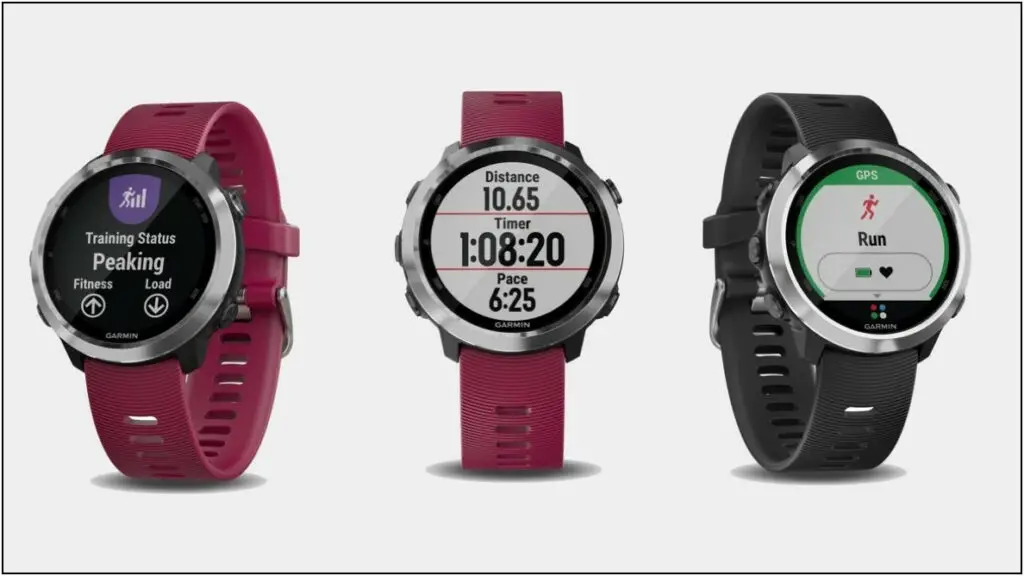
The Garmin Watch OS is similar to the Fitbit OS but is made for Garmin smartwatches only. It focuses on providing a robust health algorithm for Garmin smartwatch users.
Garmin Watch OS has an accurate and powerful health-tracking algorithm with dedicated apps. It also supports some third-party apps that you can download on Garmin watches.
Some useful features of this operating system are Bluetooth calling support, messaging support, check altitude, and NFC payments through Garmin Pay. It also works smoother and consumes less battery life due to its lightweight build.

Pros of Garmin OS:
- Supports Bluetooth Calling
- NFC Payments Via Garmin Pay
- Supports Third-party Apps
- Better Health Algorithm
- Battery Efficient
Cons of Garmin OS:
- Less Productive
- Only Available for Garmin Smartwatches
- Google Services Not Supported
- Less Appealing
The Garmin Watch OS is again only available for the Garmin smartwatches and fitness trackers.
7. Zepp OS

Zepp OS is a new operating system in the smartwatch industry, launched by the wearable brand Amazfit. It is a feature-packed OS with many useful features, including support for third-party apps.
The Zepp OS is a lightweight operating system based on FreeRTOS that consumes less battery life. Besides, it has a dedicated health algorithm for better health tracking.
The Zepp OS also supports some third-party apps that can be downloaded to the watch via the companion app. Furthermore, you get 4G LTE, Bluetooth, and WiFi connectivity support.
For now, we have seen Amazfit smartwatches with Bluetooth calling feature, but the brand may release cellular calling watches too in the future.

Overall, the Zepp OS is an advanced FreeRTOS based operating system that supports many features like Android Wear. One more helpful feature of Zepp OS is that it supports Alexa and an additional offline voice assistant.
Pros of Zepp OS:
- Supports Third-party Apps
- Dedicated Health Algorithm
- NFC Payments
- 4G LTE, Bluetooth, and WiFi Connectivity
- Battery Efficient
Cons of Zepp OS:
- Only Available for Amazfit Smartwatches
- Google Services Not Supported
- No Portability
The Zepp OS is only available for Amazfit smartwatches, and you can find it in the latest Amazfit GTS 3 and GTR 3 series.
Note: Features like NFC payments, Cellular, WiFi, and Calling may or may not be available based on the smartwatch hardware.
Bonus- How to Check the OS On Your Smartwatch?
We have discussed all the operating systems of smartwatches, but did you check which OS your watch has? Well, here are the three easy ways to check it:
Check Brand’s Product Page: You can go to the manufacturer’s or brand’s website at the product page to see what operating system the smartwatch is running on. You may also find information regarding updates, if any.
Check Product’s Retail Box: Brands generally mention the OS type on the retail box of the product. You can check it at the backside of the box, and if your watch has a special OS apart from RTOS, it likely be mentioned.
Check Software Information in Watch Settings: The easiest way to check the OS type of your watch is to check software settings. Open settings and look for the About section to find information about the software and version.
Wrapping Up- Smartwatch Operating Systems
These are common types of operating systems that you will find on smartwatches around you. Based on the features, pros, and cons, you can decide what OS you need to prioritize when looking for a watch. We usually prefer Wear OS or Watch OS (in the case of an iPhone) for the features they bring to the table. Anyways, what’s your choice? Let us know via comments.
